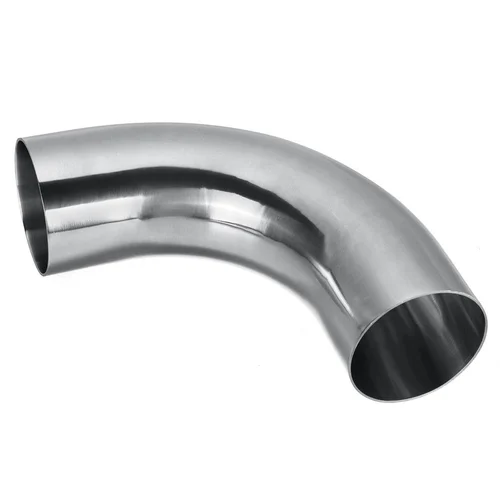-
Cangzhou Yulong Steel Co., Ltd.
-
Phone:
+86 13303177267 -
Email:
admin@ylsteelfittings.com
- English
- Arabic
- Italian
- Spanish
- Portuguese
- German
- kazakh
- Persian
- Greek
- French
- Russian
- Polish
- Thai
- Indonesian
- Vietnamese
- Zulu
- Korean
- Uzbek
- Hindi
- Serbian
- Malay
- Ukrainian
- Gujarati
- Haitian Creole
- hausa
- hawaiian
- Hebrew
- Miao
- Hungarian
- Icelandic
- igbo
- irish
- Japanese
- Javanese
- Kannada
- Khmer
- Rwandese
- Afrikaans
- Albanian
- Amharic
- Armenian
- Azerbaijani
- Basque
- Belarusian
- Bengali
- Bosnian
- Bulgarian
- Catalan
- Cebuano
- China
- China (Taiwan)
- Corsican
- Croatian
- Czech
- Danish
- Esperanto
- Estonian
- Finnish
- Frisian
- Galician
- Georgian
- Kurdish
- Kyrgyz
- Lao
- Latin
- Latvian
- Lithuanian
- Luxembourgish
- Macedonian
- Malgashi
- Malayalam
- Maltese
- Maori
- Marathi
- Mongolian
- Myanmar
- Nepali
- Norwegian
- Norwegian
- Occitan
- Pashto
- Dutch
- Punjabi
- Romanian
- Samoan
- Scottish Gaelic
- Sesotho
- Shona
- Sindhi
- Sinhala
- Slovak
- Slovenian
- Somali
- Sundanese
- Swahili
- Swedish
- Tagalog
- Tajik
- Tamil
- Tatar
- Telugu
- Turkish
- Turkmen
- Urdu
- Uighur
- Welsh
- Bantu
- Yiddish
- Yoruba

Nov . 29, 2024 13:36 Back to list
Best Practices for Welding Underground Pipes Safely and Effectively
Underground Pipe Welding Techniques, Challenges, and Best Practices
Underground pipe welding is a critical aspect of infrastructure development, particularly in the oil, gas, and water industries. With the increasing demand for efficient transportation of resources, the integrity and durability of underground pipelines cannot be overstated. This article delves into the techniques, challenges, and best practices associated with underground pipe welding.
Importance of Underground Pipe Welding
Underground pipelines facilitate the safe and efficient transport of various fluids, ranging from natural gas to water. The welding process is essential for creating strong, leak-proof joints that can withstand high pressures and environmental conditions. Proper welds not only ensure structural integrity but also play a significant role in minimizing operational costs and maximizing safety.
Welding Techniques Used
1. TIG Welding (Tungsten Inert Gas Welding) This method is favored for its precision and ability to create clean welds, particularly for thin-walled pipes. TIG welding uses a non-consumable tungsten electrode and requires a high level of skill, making it suitable for high-quality applications.
2. MIG Welding (Metal Inert Gas Welding) MIG welding is known for its speed and efficiency, making it ideal for larger diameter pipes. The process uses a continuous wire feed and is less labor-intensive, which can accelerate project timelines.
3. Stick Welding (Shielded Metal Arc Welding) Stick welding can be performed in various environmental conditions, making it highly versatile for underground applications. It is particularly useful in situations where access is limited, as it does not require shielding gases.
4. Submerged Arc Welding (SAW) This technique involves placing a granular flux over the weld area, which protects it from contamination. SAW is preferred for thick-walled pipes in environments where high deposition rates are required.
Challenges in Underground Pipe Welding
underground pipe welding

Welding underground pipes presents several challenges that must be addressed to ensure successful outcomes. One of the primary issues is accessibility. Underground locations can complicate equipment setup and maneuverability, often requiring specialized tools and techniques.
Another significant challenge is maintaining the quality of welds in adverse weather conditions and in environments with soil contaminants. Factors such as moisture, dirt, and temperature variations can affect the welding process, leading to weak joints if not properly mitigated.
Furthermore, ensuring proper alignment and fit-up of the pipes is critical before welding. Misalignments can result in excessive stress during operation, leading to failures over time. Therefore, accurate measurements and adjustments are essential before initiating the welding process.
Best Practices for Successful Welding
1. Pre-Welding Preparations Conduct thorough inspections and cleaning of the pipe surfaces to remove any contaminants that could compromise the weld quality.
2. Skill Development Hire qualified welders with experience in underground welding techniques. Continuous training and certification in relevant welding processes ensure that welders are familiar with the specific requirements of underground work.
3. Use of Proper Equipment Invest in high-quality welding equipment that is suitable for the specific type of pipes and welding methods employed. The right tools can significantly enhance the efficiency and quality of the welds.
4. Quality Control Measures Implement rigorous quality assurance protocols, including visual inspections and non-destructive testing methods such as ultrasonic or radiographic testing. These measures can help identify any defects before the pipeline is put into operation.
5. Post-Welding Inspections Conduct comprehensive assessments after welding to verify the integrity of joints and ensure compliance with industry standards.
In conclusion, underground pipe welding is a complex yet vital process that requires a combination of skilled labor, advanced techniques, and stringent quality control measures. By addressing the associated challenges and adhering to best practices, the industry can enhance the safety, efficiency, and longevity of underground piping systems, ultimately contributing to the success of infrastructure projects globally. With the right approach, the vital role of underground pipelines can be further solidified in supporting modern society’s needs.
Latest news
-
ANSI 150P SS304 SO FLANGE
NewsFeb.14,2025
-
ASTM A333GR6 STEEL PIPE
NewsJan.20,2025
-
ANSI B16.5 WELDING NECK FLANGE
NewsJan.15,2026
-
ANSI B16.5 SLIP-ON FLANGE
NewsApr.19,2024
-
SABS 1123 FLANGE
NewsJan.15,2025
-
DIN86044 PLATE FLANGE
NewsApr.19,2024
-
DIN2527 BLIND FLANGE
NewsApr.12,2024
-
JIS B2311 Butt-Welding Fittings LR/SR 45°/90° /180°Seamless/Weld
NewsApr.23,2024











